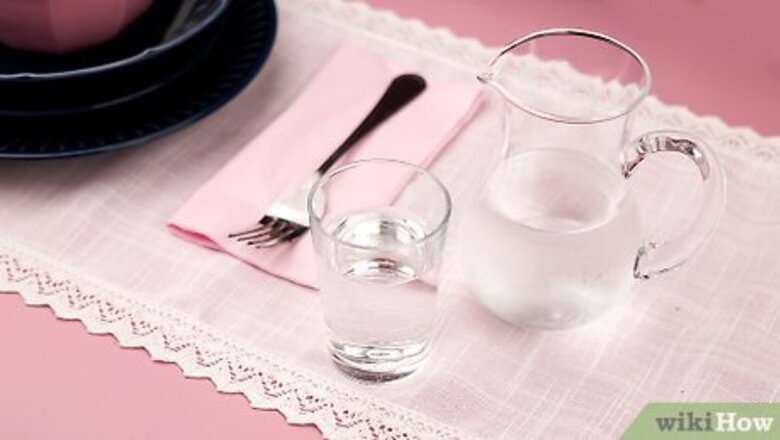
views
X
Trustworthy Source
Harvard Medical School
Harvard Medical School's Educational Site for the Public
Go to source
Not to worry! Eating smaller portions, or portion control, is easy to master with a little bit of practice. We’ve put together some tips, tricks, and suggestions to help you get started.
Drink water before you dig into your meal.

Sipping water before a meal might help you feel full. Try drinking a 500 mL (17 fl oz) glass of water before digging into your meal. According to some studies, people actually ate smaller portions of food after drinking water. It’s no magic trick—water fills up your tummy, so you don’t feel as hungry while you eat. Generally speaking, experts suggest women drink 11½ cups (2.7 L) of water each day and men drink 15½ cups (3.7 L).
Snack on a soup or salad first.
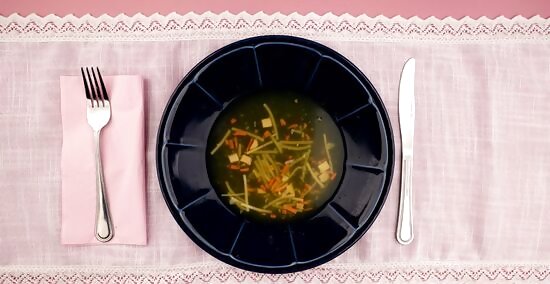
People who eat salad as a first course may eat smaller portions at lunch. Similarly, people who sip on some soup before lunch may eat fewer calories during their main meal. Ultimately, a small appetizer like a salad or broth-based soup can help fight off any big hunger pangs, so you don’t eat as much in the long run. For reference, a serving of salad is about 1 cup (250 mL). Women should dish up a 1 ⁄2 c (350 mL) of soup, and men should dish up 2 c (470 mL).
Grab a smaller dish and serving spoon.
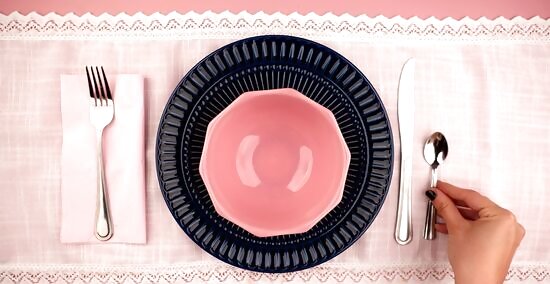
Smaller dishes and cutlery instantly shrink your serving size. During a party, researchers gave the party-goers a big or small dish, as well as a big or small ice cream scooper. Overall, people who had bigger bowls and scoops ate more ice cream than the people with smaller dishes and scoops. This is because smaller dishes and serving utensils make it way easier to enjoy food in moderation. For instance, you could grab the smallest dish available at a buffet, or eat dinner on smaller plates at home.
Avoid eating out of a package or container.
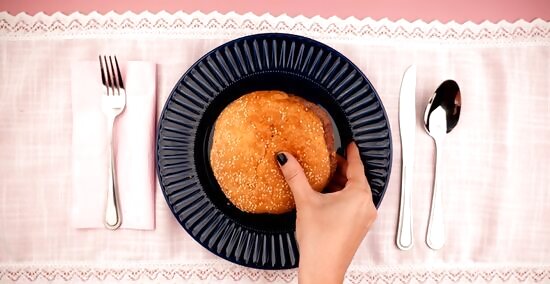
Check the food label to see what the recommended portion size is. When you eat directly out of the bag, it’s all too easy to lose track of how much you’ve actually eaten. Portioning your food helps you enjoy your favorite snacks without eating really big portions. For example, you might pour some potato chips into a small dish instead of snacking directly from the bag. You might pour out a handful of your favorite candy instead of eating the whole package at once.
Split restaurant entrees in half.
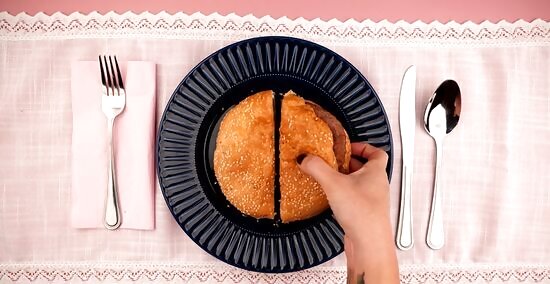
Restaurant servings are notoriously big. Before digging into your dish, take a second to cut your entree into 2 portions. You could share your meal with a loved one, or ask your server for a doggie bag or to-go box so you can enjoy your leftovers later. Try to steer clear of larger portion options if the restaurant offers them.
Add a little spice to your meals.

Red pepper can lower your appetite for future meals. In 1 study, researchers asked some participants to eat a non-spicy breakfast, and others to eat a breakfast made with red pepper. Believe it or not, people who ate the spicy breakfast had less of an appetite and didn’t eat as much during lunch. You might add a dash of red pepper to your scrambled eggs, or sprinkle a little bit of pepper on your toast.
Wait 10-20 minutes before going back for seconds.
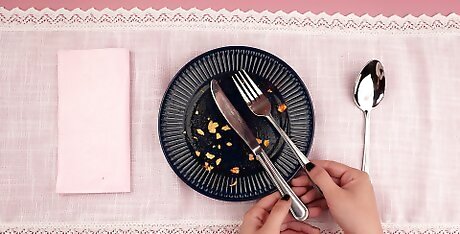
You might not feel full right after you finish eating. Before getting another helping, take a breather for at least 10 minutes and see if you feel full afterward. It takes about 15 minutes for your body to tell your brain that you’re full, so you might not be as hungry as you originally thought!
Practice eating mindfully.
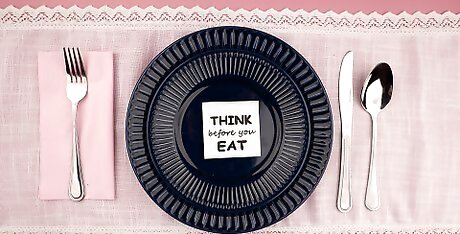
Mindful eating helps you make careful, intentional decisions about your food portions. Choose to eat when you’re hungry, but not starving—this way, you can appreciate your food instead of eating it really quickly. Then, dish out a small portion for yourself. Take a couple of minutes to think about the time and effort that went into making the meal. As you start eating, enjoy your food in small bites, taking time to chew carefully. For instance, if you’re about to eat some spaghetti, think about the time it took to buy the spaghetti, cook the noodles, and prepare the sauce. Then, give a silent thanks for the chance to enjoy this delicious meal.
Serve up small sports ball-sized portions of fruits and veggies.
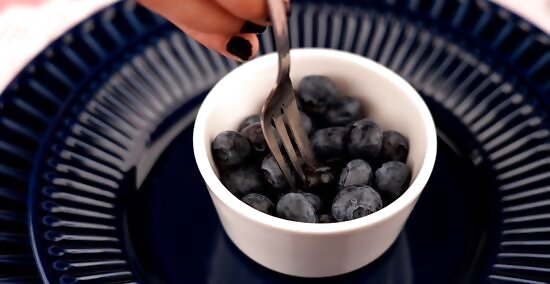
Try to eat 5 servings of veggies and 4 servings of fruit each day. A single serving of veggies is about 1 cup (36 g) of leafy greens, ½ cup (74.5 g) of chopped-up veggies, ½ cup (65 g) of cooked peas or beans, or ⁄4 c (59 mL) of pure vegetable juice. One serving of fruit could be 1 medium-sized piece of fruit, ⁄4 c (59 mL) of pure fruit juice, ¼ cup (40 g) of dried fruit, or ½ cup (59 g) of chopped-up fruit. For reference, a serving of veggies is about the size of a baseball, while a fruit serving is about the size of a tennis ball. Veggies are chock full of water and fiber, so they help you feel full and satisfied after a meal. You could toss some chopped-up veggies in your morning omelet or slurp down a bowl of vegetable soup at lunch. You might even snack on carrots, bell peppers, green beans, and other tasty veggies when you get hungry. You could whip up a fruit salad with your lunch and dinner, or snack on some dried fruit throughout the day.
Add a card-deck-sized serving of lean protein.
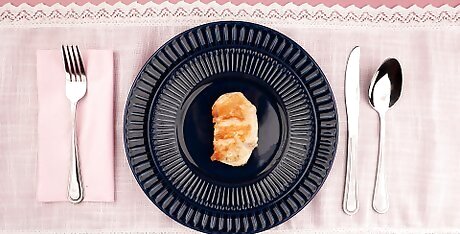
Protein helps you feel more satisfied and full after you eat. Try to eat about 1-2 servings of meat and poultry every day. Experts also recommend eating about 1 serving of nuts, beans, seeds, and legumes each day, and enjoying a serving of fish and seafood every other day. A serving of lean protein resembles a deck of playing cards. A serving of nut-based protein could be 1 US tbsp (15 mL) of peanut butter, 2 tbsp (17 g) of seeds or nuts, or ¼ cup (15 g) of cooked peas or beans. Peanut butter, tuna fish, black beans, and salmon are all great sources of protein.
Include a hockey puck-sized portion of whole grains.
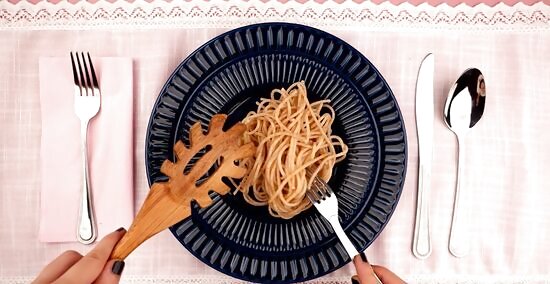
Whole grains are way more filling than refined grains. Look for quick, easy replacements you can make in your favorite meals, like switching white rice with brown, or using whole-grain spaghetti instead of the regular kind. Since whole grains are more satisfying overall, you won’t have to eat as much. A single serving of grains is the same size as a hockey puck. Health experts recommend eating around 6 servings of grain each day. You might enjoy a slice of whole-grain toast for breakfast, or snack on a handful of whole-wheat crackers. If you like to bake, try using a little bit of whole-wheat flour instead of all-purpose flour.
Enjoy a cup of dairy with your meal.

Dairy products help you feel less hungry and more satisfied. Try aiming for around 3 servings a day. About 1 cup (236.5 mL) of dairy is considered a serving—this might be 1 cup (236.5 mL) of skim milk, 1½ oz (28 g) of cheese, or 1 cup (236.5 mL) of low-fat yogurt. Stock up on your favorite dairy products for a delicious, satisfying snack. You might enjoy some yogurt with your breakfast, or sip on a glass of milk at dinnertime.
Limit your fats and oils to a serving the size of a pair of dice.
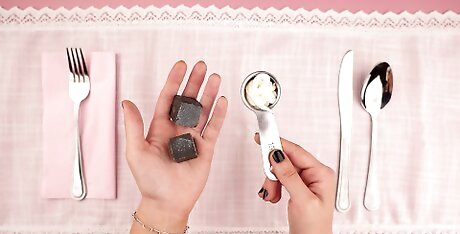
Try to limit yourself to around 3 servings each day. A serving of oils and fats could be 1 US tbsp (15 mL) of vegetable oil, 1 US tbsp (15 mL) of margarine, 1 US tbsp (15 mL) of low-fat salad dressing, or 1 US tbsp (15 mL) of low-fat mayonnaise. A single serving will be around the same size as 2 playing dice put together. Opt for unsaturated fats, like olive and canola oil.
Fill up on 21-38 grams of fiber each day.
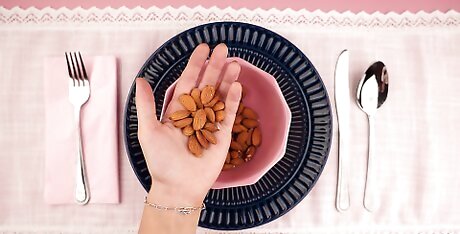
Dietary fiber helps you feel full after you eat. Choose plenty of high-fiber foods for your meals and snacks, like whole grains, nuts, seeds, beans, fruits, and veggies. By eating more fiber, you can feel full more quickly, so your portions don’t have to be as big. Experts recommend that women up to age 50 eat 25 grams of fiber each day, while men up to age 50 eat 38 grams. Women over 50 should consume 21 grams, while men over 50 should consume 30. You might eat a handful of sunflower seeds or mixed nuts as a snack, or enjoy nachos topped with beans for lunch.












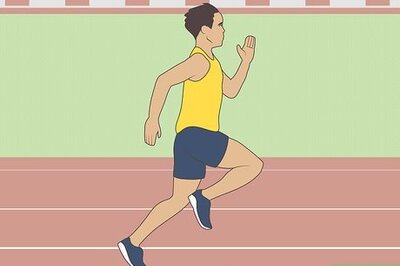





Comments
0 comment